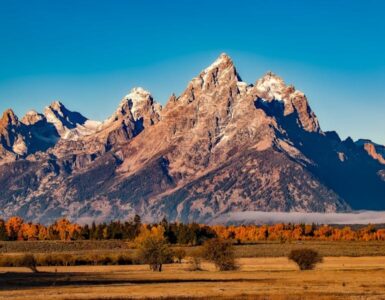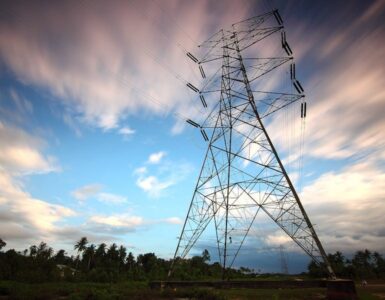As part of its ongoing examination of Arizona groundwater policy, Chamber Business News is visiting with water experts and policy leaders about their views on groundwater and what they believe are the defining issues for one of the state’s most pressing challenges.

Today CBN visits with Cheryl Lombard, president and CEO of Valley Partnership.
This interview has been edited for clarity and length.
Chamber Business News: Cheryl, tell us about your job and what your organization does.
Cheryl Lombard: I’m president and CEO of Valley Partnership. We’re an advocacy organization for real estate development across the Valley and in Arizona. We have all types of real estate developers. We have masterplan developers, and we have industrial & commercial, which includes office, retail and multifamily. We advocate for responsible development, which we’ve defined in terms of certain policy outcomes, which includes working on water, infrastructure, transportation, and consistency across cities in terms of their regulations.
CBN: Let’s say you meet a new legislator, maybe you meet a new city councilperson, and they say, “Cheryl, I want to know more about water. I want to learn more, but it’s a daunting subject. Where do I start?” What are some of the guideposts that guide your work in the water space that you attempt to convey to elected officials and regulators?
Cheryl: That’s a subject that when I joined Valley Partnership six years ago that I took on. The situation then was a little more certain in terms of water. It certainly wasn’t something my members were being asked or even thinking about from their investors. But now it is a question. We have worked over these past six years in developing policies. Those policies include getting new resources of water, protecting what we have, and determining how we pay for it.
We mainly engage in the Active Management Areas. We’re looking at how we pay for water now, how we have good water policy, how we built infrastructure. Real estate development is part of the solution. Many of our masterplan developers are building wastewater treatment plants, same with even our commercial office buildings. They are building infrastructure pipelines and they pay impact fees that pay for infrastructure in our cities that build our water infrastructure and help pay for supplies. We also pay water rates in our cities.
CBN: In Arizona, we read headlines about some big new investment – a development that’s going to result in a big building where lots of people are going to work. But in some corners those developments will face criticism that the project is too water intensive. How do you respond to critics who charge your industry is exacerbating the state’s water challenges?
Cheryl: Our urban areas have been planning, our whole state has been planning for years. We have great infrastructure. We have great bones in terms of water supplies, very senior water rights in our urban areas. Those are not big concerns. Major cities have invested in that water infrastructure, and they have done great work in terms of conservation. New development actually uses less water than any type of older infrastructure, older developments, residential and commercial office space.
CBN: You are in a high-demand industry. You are in a fast-growing state. Do we have the supply of water to keep up with that demand?
Cheryl: Yes. Obviously, with the Colorado River we’re entering a tier-one shortage. The first wave is something that we’ve expected. That was part of the Drought Contingency Plan, which we just negotiated two years ago.
We have a great history in our state of coming together, which is what we did with DCP. We knew that these tier-one cuts were coming. It just came a little sooner than anticipated. Arizona is working toward finding more solutions. There are other means of water, whether it’s using Harquahala water, which is already legally enabled to be transferred from that basin into the AMA (Active Management Area). If we’re looking at other supplies, there’s de-sal (desalinization). That’s quite a ways away. We’re now looking at some really important federal legislation that’s going to be introduced by Senator (Mark) Kelly, dealing with the Colorado River Indian Tribes. That’s going to be an important source. Salt River Project is looking to expand storage. Our cities are storing water underground. We have great supplies of water as we enter not only future reductions in Colorado River water, but as we transition away to other resources.
Just last session, Speaker (Rusty) Bowers led the way in terms of creating that drought mitigation fund. That is going to be an amazing tool for new sources of water. We’re hoping next session that gets expanded in terms of funding and other opportunities.
CBN: We’ve got Pinal County farmers who are now forced to rely less on the water in the canal and more on groundwater from wells. If your members were to build a building in Pinal County, would your members be using the water that comes out of the canal or would they be using groundwater?
Cheryl: Let’s remember the purpose of the Pinal AMA has a different purpose than the rest of the other AMAs. It’s an agriculture-heavy community that was hypothetically transitioning to development. So, it has what’s called “planned depletion.” They have had the legal right to go to groundwater.
For real estate development, though, we have to meet what’s called the assured water supply to enable development in the Pinal AMA or, really, anywhere. Right now in the Pinal AMA, because of the imbalance of the aquifer, real estate development is not able to get new certificates in the Pinal AMA.
CBN: Is that only homebuilders, or also other types of builders as well?
Cheryl: Only for residential do you have to get assured water supply. But where this is important, hypothetically, are these big industries that are going down in Pinal County. We have great concern about meeting the residential demands of those new employees that are coming there. We really need to start to identify new sources for Pinal County and, again, the rest of our state, which is why the Speaker’s fund last session was so important.
But this is not unique to all our AMAs. It’s not unique to the rest of our state that we’re struggling with these issues as we grow and determine how we manage our water resources. We do have water, we just have a few regulatory hurdles to move some water around, which is going to be an interesting discussion.
CBN: Let’s say you’ve got a member who wants to build a factory in Pinal County. Should they have to meet the assured water supply the same way homebuilders do?
Cheryl: I’m co-chair of the Post-2025 Committee, which is dealing with those issues. That question as to whether we should be strengthening the groundwater code — specifically in AMAs — in this time of crisis has come up.
It has been the majority sentiment of those on the committee that we need to first address additional supplies before we go amending the Groundwater Act. We need to have that certainty in place before we start adding new limitations to the Groundwater Management Act.
CBN: You are a development and growth booster, but you’ve also talked about the need for responsible growth. On a scale of 1 to 10, 1 being totally pessimistic, 10 being optimistic, do you believe Arizona can meet this desire and demand to grow?
Cheryl: We already have a great basis. We do have the Groundwater Management Act. The most immediate struggle will be down in Pinal County and what the future looks like in terms of agriculture, responsible development, and industry in those areas, as well as across of all the AMAs. We’re really going to have those discussions.
Also, cities want to be responsible users of their water sources and determine the best type of businesses to attract. I think we’re going to see more of that in our cities. Those are good discussions for us to have.
How do we strike the right balance? What are some of those criteria for us to really look at so that we can have homes and jobs in one area?
CBN: In the years you’ve worked on water policy, what’s a misperception or something that gets reported that you hear over and over again that you most want to correct?
Cheryl: It’s all of these out-of-state news organizations starting with the perception that nothing is sustainable in Arizona. Whether it be that we’re too hot, or we don’t have water. Now we have other states that are trying to take our good fortune in terms of what’s going on with our economy and trying to leverage water against us. That is just really frustrating because, frankly, Arizona has been planning. We’ve had the Groundwater Management Act much longer. California just got it. So, getting those facts out to outside of our state is important. That’s my biggest pet peeve at this point.
There is a way to do all of this. There is a way for us to work with flowing rivers, agriculture, mines and development & industry, and all work together.
CBN: Do we need to revisit the Groundwater Management Act, or is it satisfactory the way it is?
Cheryl: It is satisfactory the way it is right now. We need to utilize the tools that are within the Groundwater Management Act, such as certain exceptions to transfer groundwater outside of the AMAs. Now is the time we’re going to need that. Now’s not the time to take those away.
We need to also actively work with tribal partners. Once that certainty is established, we can look at what’s next in terms of the Groundwater Management Act.
CBN: You’re an optimist in in that regard?Cheryl: Yes. I feel very strongly about that. We already have very good bones, much better than most states across the West. We need to demonstrate our ability to pull together so that we can have more certainty and then examine all of our regulations.
















Add comment